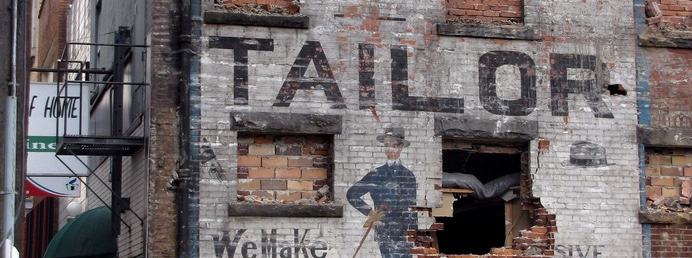The film spoke of an America moving forward into the 21st century, a country at the height of its power, hijacked by fear and war. It focused on a simple tailor, a man dedicated to making his idiosyncratic yellow garments, the image of a woman who wasn’t quite the Mother Mary hanging in the background the entire time.
People come in and out of his shop: the Armenian man who disappears without explanation, the single mother who does the tailor’s laundry, the young African for whom he makes the funeral suit. All the while Mother Mary becomes older, darker, more gray.
Then the end comes when the government agents storm in and he begs them in a gibberish language, nearly hysterical as he urges them away. But the small and humble space of his shop becomes filled with brackish water, oozing out of the walls as if Hurricane Sandy had arrived again. The agents ignore it, though, screaming in barely controlled fear at the tailor, while the water rises up to their knees. The tailor doesn’t begin to weep, though, until the tentacles come out of the walls. He watches the unexplained appendages grab each agent by the boots and drowning them in the foaming water. He pleads for each man’s life.
It becomes an underground sensation, the film of this strange tailor standing still as the new America changes around him. People stream out of the theater, shouting and demanding change, unable to describe their motives.
See the author’s published work here.
Related Posts
The American: Chapter 22 Next Post:
The American: Chapter 23
























